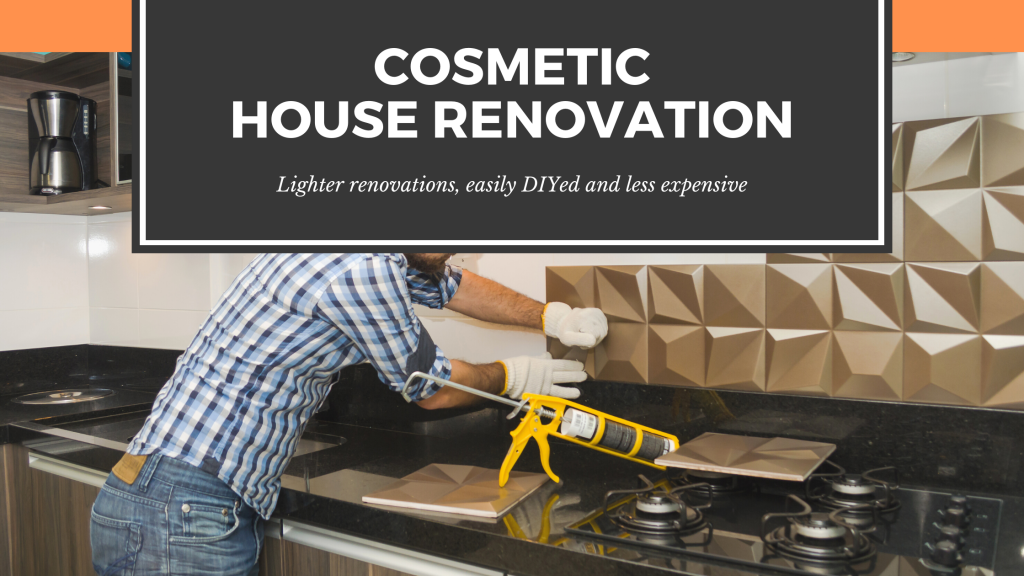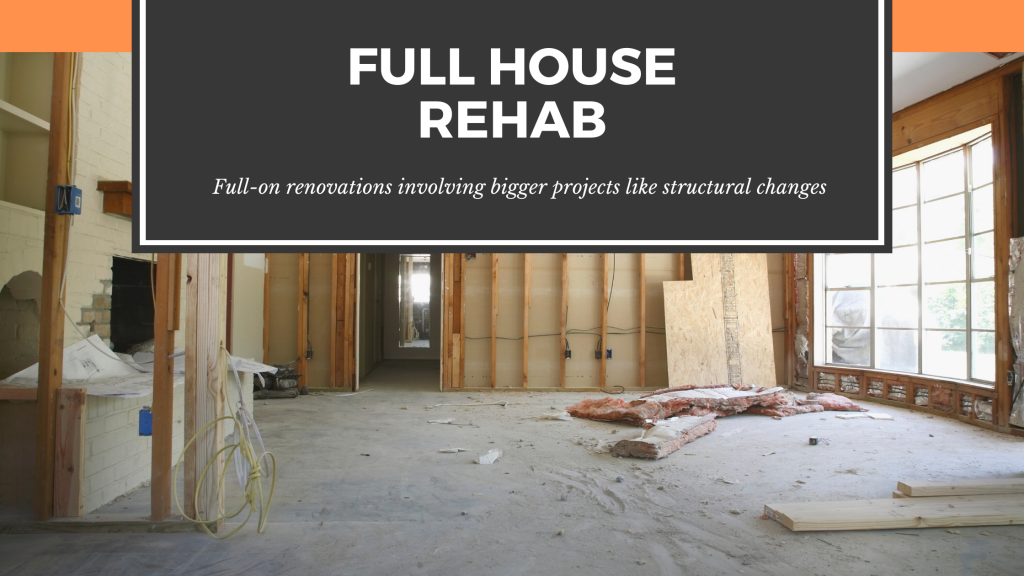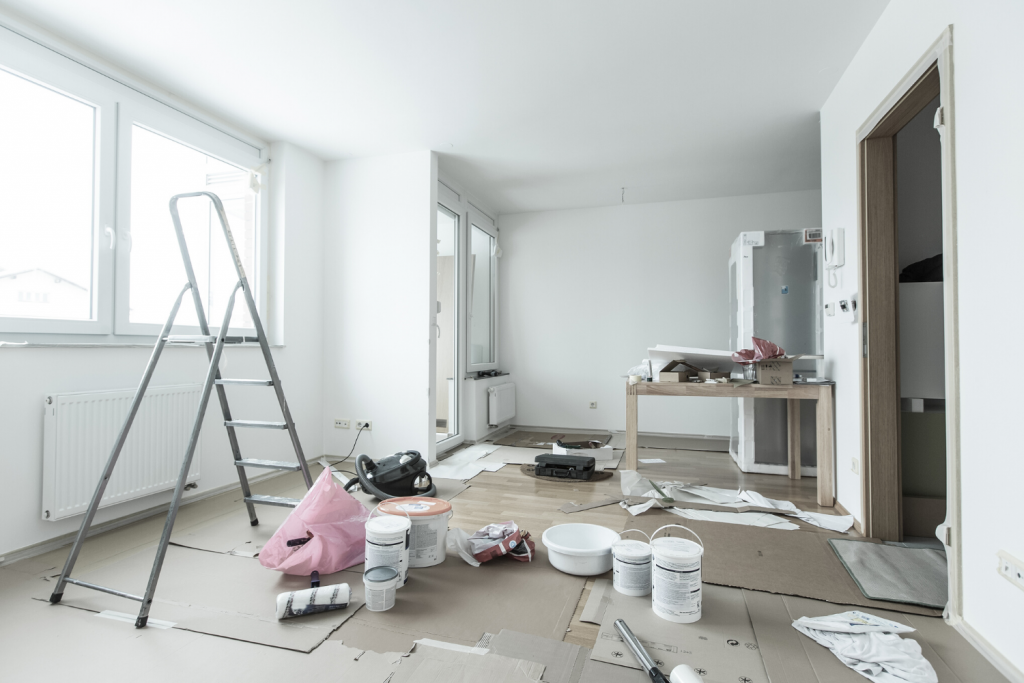You’ve done it; you’ve purchased a fixer-upper, and with some elbow grease you think you can sell it for a good profit later. The big question is how long will it take you to make those changes, and how much it will cost you. The answer can be a bit of a challenge.
Many homeowners and house flippers have wondered about house renovations and how long they will take. After all, a big part of flipping successfully is keeping to a set timeline. The answer is that the time needed for a property renovation will highly depend on what needs to be done, and the size of the home you are planning to fix up. The location your property is in can also have a big impact on how long a full house renovation can take. On average, home renovations can range anywhere from a week, a few months, or a whole year depending on the scale of the work that needs to be done.
Needless to say, if you’re planning to do a home renovation, you’ll need to have a good idea of how long certain projects can take and how to manage them effectively. If you’re unable to keep to your planned timeline, you can easily end up going over your renovation budget.
Keep reading for a detailed breakdown of how long house renovations take, why and how to manage them:
Table of Contents
Types Of Renovation

Different renovations will take different amounts of time and effort to complete. Repainting some window frames obviously won’t take as long as redoing bathroom tiling, or gutting old kitchen cabinets. When you’re taking on a flip property, you need to carefully evaluate the scale of the projects you plan to take on and how much work they will require.
Typically, house renovations can be broken down into three different categories: cosmetic renovations, medium renovations, or full rehabs. Cosmetic renovations refer to properties that need only a few basic repairs and are the easiest type of renovation to take on. Often, fix and flip investors will take these types of projects on themselves in order to save on labor costs. Medium renovations are not as minor as cosmetic renovations, but less intensive than full rehabs. You could take them on yourself, but it would mean doing some research, getting your hands dirty, and committing to something that can take up to a few weeks.
Full rehabs are properties that require a lot of intensive renovations and should be reserved for more experienced flippers. In this category, you may be dealing with major structural changes, redoing electrical, plumbing, and other intensive projects that are not for the faint-of-heart. These types of renovations are the most expensive and take the longest to complete on average. In the hands of a less experienced investor, these projects can take up to twice as long due to trial and error.
Cosmetic Renovations

When doing mainly cosmetic renovations, there are certain projects that you can expect to take on from the get-go. For example, it’s considered good practice to paint a property before selling it or renting out. This is a task that you can do on the cheap, and save even more by doing the painting yourself.
Cosmetic renovations usually mean less intense rehab work and are more associated with tasks like painting, carpeting, or drywall repairs. These renovations do not refer to major changes like changing the property structure or doing any demolition work. Therefore, this is the best type of renovation for a beginner investor to take on. With cosmetic renovations, you can expect to have a time frame of a week to a month or two. This largely depends on whether you do the work yourself or make use of professionals.
Hiring professional painters can cost anywhere upwards of $200 depending on the size of the property. Replacing carpets will cost you more, ranging between $759 and $2,546. This cost will again largely depend on the size of the rooms you are planning to carpet, but also on the type of carpet you choose. Fixing dry walling falls in the same price range as replacing carpets. These costs are what drive many flipping investors to DIY these and other smaller projects.
Less experienced investors are advised to look for turnkey properties. Turnkey homes are houses that need only cosmetic repairs before being suitable for sale. These properties are particularly beneficial as they can be resold or filled with tenants quickly, which means faster profits for the investor.
Medium Renovations

This middle category is somewhere between short and long-term renovation projects. The repairs associated are more expensive and time-intensive – think moving walls, replacing kitchens, and putting down new roofing as a few examples. These renovations are typically more intensive than cosmetic repairs, but less work than a full rehab would be.
In the kitchen, depending on the scale of the work being done, the actual installation can take up to a month or more alone. With more serious renovations, there has to be some time set aside for planning and the sourcing of materials. It’s important to take the time to measure everything, order samples, organize any permits you need, and set things in motion.
Since medium renovations are more time-consuming, these renovations can take between 3 and 6 months to complete altogether.
This is because, for many larger renovation projects, you’ll need to do significant planning and preparation, including getting permits if you want to move walls inside the property. These renovations will also likely need more work from professionals, versus cosmetic renovations which can largely be DIYed. It’s important to remember that depending on the materials you choose for these renovations, you may have to wait for materials to be shipped and delivered.
Full Rehabs

This is the category of house renovation that should not be approached lightly. Usually taken on by more seasoned flippers, full rehabs are extensive projects that require a lot of resources and time to complete. Major home rehabs like these can include projects like floor replacements, structural repairs, redoing electrical and plumbing, and other intensive projects. In other words, it’s important to know what you’re doing before jumping into a project like this one.
House renovations of this nature can take up to 180 days to complete on average. This is also the category that requires the most financial resources to do and will require input from a variety of professionals. Some real estate experts recommend budgeting for around $1000 to be spent a day during the house flipping process. Since full rehabs will need the biggest amount of work, with the highest budget, sticking to the timeline is essential. Since fix and flips need to be resold as soon as possible, every day that your project deviates from the timeline will eat into your profits.
Renovation Timelines

Start planning your timeline by creating a spreadsheet with all of the projects that need to be done for the property to reach a sellable state. Include project categories, the work to be done in those categories, contractors, and a general range of time for each project to be completed in.
Your contractors can provide a more clear idea of how long each project may take, which is why it’s important to choose the right ones off the bat. The last thing you want to do is end up working with a contractor that does not complete projects, or absconds before everything is completed. You also don’t want to take the risk of doing everything yourself, only to have to pay a professional to fix it later. DIY where you can, and get a pro to take on what you can’t.
To make your timeline as efficient as possible, you may want to take some of these following steps. First, schedule all of the contractors you need well beforehand. Emphasize that it is important to stay on schedule, and make sure you are organizing the sequence of work to be done correctly. After all, you don’t want to end up painting first and doing demolition later!
If you’re unsure about the order of renovations you want to undertake, try speaking to other real estate flippers in your network and getting insights from them. If you’re less confident taking on a project of this nature by yourself, you can team up with another property investor that has more experience and is willing to share the workload with you.
As briefly mentioned above, the location of your property will have an effect on your timeline. If the house is located in a hard-to-reach area, you can expect delays when it comes to construction or materials being delivered.
Final Thoughts
This article lists only a few of the common examples of house renovation projects and how long they may take. Remember when doing a house renovation as a flip, the faster you get the house on the market, the better. You need to reach the fine balance between finishing the renovation quickly but still maintaining the quality that buyers will be looking out for. Every extra day spent on renovations will cost you – whether it be fees, taxes, or contractor costs. The problem is that these costs can quickly build up and start eating into your profits.
Knowing which category the majority of your renovations fall into will help you gain a better understanding of how long the project will take, and what it will cost you. That’s what makes planning your timeline, including the sequence of jobs to be done, is so important. Think carefully about the order of renovations, and rely on your contractor for additional guidance.
It’s highly advisable to create a timeline spreadsheet for your renovation and to get materials ordered and ready to go by the time you are ready to start the rehab. This also goes for any service providers you have in mind – make sure to contact them early. When working with other professionals on a renovation project, always make sure to vet them carefully.
Depending on what needs to be done and whether you’ll be taking these projects on yourself, the time it takes to renovate can vary. House flipping investors that are good with their hands.



